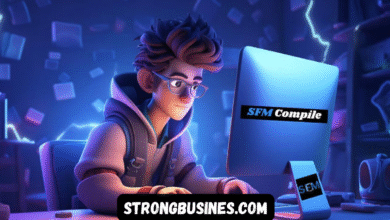Competitive edge the serpentrogue haunting and mechanically innovative action-adventure game that carves a distinct identity through its alchemy-driven gameplay, atmospheric storytelling, and intricate world-building. Developed by Sengi Games and published by Team17, the title invites players into a plague-infested land teetering on the brink of ruin. The protagonist, known only as The Warden, is tasked with maintaining balance amidst spreading corruption. While many indie games embrace a familiar structure of combat and exploration, The SerpentRogue differentiates itself by demanding intellectual engagement, careful preparation, and immersive curiosity. It is within these distinguishing qualities that the game finds its competitive edge.
The Foundation of Strategic Gameplay
Unlike many action-adventure titles that emphasize rapid combat and fast progression, The SerpentRogue embraces a slower, more cerebral pace. Strategy is at the heart of its mechanics. Each step must be calculated, every choice carries long-term consequences, and success is often tied to preparation rather than brute strength. The game challenges players to learn from their environment, adapt to its unpredictability, and approach each situation with care. This reliance on intelligence and planning over reaction time grants the game a strategic depth that sets it apart.
Alchemy as the Core Mechanic
At the center of The SerpentRogue lies its most defining feature: the alchemy system. Players must learn how to gather, identify, and combine ingredients to create potions with a variety of effects. This system is not an auxiliary feature but the very heart of the gameplay loop. Each ingredient has its own properties, and through experimentation, players begin to understand how to craft solutions for combat, survival, and exploration. This alchemical mastery replaces traditional RPG systems like leveling up or gaining overpowered gear. Knowledge and experimentation are the true tools of progress, and that knowledge must be earned through trial, error, and patience.
The Challenge of Environmental Interaction
The world of The SerpentRogue is not static. It is alive, constantly changing, and reacting to the player’s decisions. Storms roll in unexpectedly Competitive edge the serpentrogue corrupted zones expand, and time alters both the dangers and opportunities present in each area. Environmental hazards, such as decay and rot, must be countered through alchemy and planning. This interplay between player and environment adds a layer of complexity that many games do not attempt. It forces players to think not only about the present, but about what the world might look like in five or ten minutes. Long-term planning becomes essential, and this transforms the player into a steward of the land rather than a mere adventurer.
The Art of Combat Preparation
Combat in The SerpentRogue is rarely approached without thought. Players must prepare their arsenal through crafted potions, traps, and tools. The stamina system restricts spamming attacks, and weapon durability limits the overuse of powerful gear. While combat is present and often intense, it is never mindless. Victory depends on how well a player has planned for the encounter. This emphasis on combat preparation over reflexes introduces a tactical rhythm that few games manage to implement successfully. In this regard, The SerpentRogue provides a more thoughtful, satisfying experience for players seeking challenges beyond fast-paced skirmishes.
Mastering the Spread of Corruption
One of the game’s most intriguing elements is the concept of corruption. It spreads through the land like a living disease, transforming creatures, environments, and even the resources players rely on. Left unchecked, it can render areas uninhabitable and enemies nearly undefeatable. Managing this corruption becomes a secondary objective that intertwines with the player’s overall progress. Through potions, rituals, and artifacts, players can slow or reverse the spread of this dark force. Balancing the push against corruption while continuing to explore and gather ingredients becomes a compelling struggle that defines much of the mid-to-late game experience.
The Role of Time in Gameplay Dynamics
Time in The SerpentRogue is not merely a cosmetic feature—it is a functional component of the gameplay. Day and night cycles alter which enemies appear, what resources are available, and how the environment responds. Events happen on their own timeline, regardless of the player’s location. This gives the game a sense of realism and progression that is often lacking in other adventure titles. Players who learn to predict and prepare for these temporal changes gain a significant advantage. It adds urgency and weight to decision-making, enhancing the immersive and strategic nature of the game.
Aesthetic as a Mechanic
The SerpentRogue’s dark, gothic aesthetic is more than an artistic choice; it is a functional aspect of the game’s identity. The visuals offer environmental storytelling, visual cues for hidden dangers, and atmosphere that affects player emotion. From the decaying architecture to the eerie fog that envelops the landscape, every visual element serves a purpose. The muted color palette complements the game’s themes of decay, mystery, and isolation. As players explore new regions, these visual indicators help guide their actions and shape their expectations. The world becomes a silent narrator, revealing its history through ruins, relics, and unnatural growth.
Minimalist Storytelling with Deep Impact
Rather than rely on long dialogues or cinematic cutscenes, The SerpentRogue employs minimalist storytelling to great effect. Most of the lore is discovered through exploration, item descriptions, and environmental hints. This hands-off approach invites players to assemble the narrative themselves, much like piecing together an ancient manuscript. The story of The Warden is cryptic, leaving room for interpretation and personal attachment. The less-is-more philosophy resonates with players who enjoy being active participants in uncovering a game’s mysteries. The lack of forced exposition allows the game to maintain its focus on atmosphere and discovery.
Learning Through Discovery and Mistakes
Progress in The SerpentRogue comes not from checkpoints or level-ups, but from learning. Every failed experiment or dangerous encounter is a teaching moment. The game does not shy away from punishing mistakes, but it always gives players a chance to understand what went wrong. Over time, these lessons accumulate into expertise. Players begin to see patterns in ingredient behavior, enemy movement, and environmental shifts. The sense of mastery that emerges from this accumulation of knowledge is deeply satisfying. It creates a bond between player and world that is hard to replicate in games that rely solely on scripted tutorials or automatic assistance.
Limited Resources and Meaningful Choices
Scarcity plays a central role in shaping The SerpentRogue’s challenge. Healing potions are rare, ingredients take time to regrow, and crafting materials may only be found in dangerous zones. This scarcity forces players to make meaningful choices. Do you use your last potion now to explore further, or save it for a potential boss encounter? Every decision has weight, and every action carries risk. This resource tension adds depth to gameplay and heightens the emotional investment. Success becomes more rewarding, and failure more instructive, because the stakes are clearly defined and ever-present.
Customization and the Role of Identity
Although The SerpentRogue is not an open-world sandbox in the traditional sense, it still offers a surprising level of customization. Players can influence the world through their actions, craft tools that reflect their playstyle, and shape the progression of their journey based on the knowledge they choose to pursue. This allows for personalized strategies and distinct outcomes. Whether one chooses to focus on combat, alchemy, exploration, or purification, the game accommodates a wide range of approaches. This flexibility adds replay value and ensures that no two playthroughs are exactly alike.
World-Building That Enhances Strategy
The game’s lore and world-building are tightly integrated with its systems. The corrupted zones, ancient ruins, and abandoned settlements all tell a story—one that informs gameplay. Understanding the origins of the corruption, or the forgotten rituals used by alchemists before, can offer real advantages in how players approach certain challenges. Rather than existing in isolation, the lore becomes a tool that supports strategy. It encourages exploration not just for loot, but for understanding. This design choice gives depth to every area and makes the game world feel like a cohesive, breathing organism.
Community Interaction and Shared Knowledge
The SerpentRogue fosters a community built around discovery. As players unearth new potion recipes, combat tactics, or environmental strategies, they often turn to forums, wikis, and social media to share what they’ve learned. This collaborative spirit is not just a byproduct of the game—it’s encouraged by its design. Since so much of the game relies on experimentation, the exchange of ideas becomes a natural extension of gameplay. This community-driven approach creates an ecosystem of shared learning, reinforcing the game’s emphasis on intelligence and mastery. It also extends the life of the game beyond the single-player experience.
Endgame Challenges and Mastery
Even after the main objectives have been completed, The SerpentRogue continues to challenge players with post-game content, harder corrupted zones, and the opportunity to refine their strategies. The game’s modular design allows for self-imposed challenges, such as surviving with limited ingredients or exploring highly corrupted areas with minimal preparation. These tests of skill and endurance appeal to dedicated players and contribute to the title’s long-term appeal. The journey of mastery does not end with credits—it evolves as the player’s understanding deepens.
The Legacy of Innovation and Depth
The SerpentRogue may not be a blockbuster title, but its impact lies in its innovation and dedication to depth. It offers an alternative to formulaic design by giving players responsibility, freedom, and consequence. Its systems interlock to form an experience that rewards intellect, curiosity, and persistence. In a genre crowded with fast-paced action games, The SerpentRogue’s deliberate pacing and thoughtful design provide a breath of fresh air. It stands as a testament to the power of meaningful gameplay over flashy spectacle.
Final Thoughts on Competitive Edge
The competitive edge of The SerpentRogue stems not from marketing gimmicks or shallow features, but from its unwavering commitment to thoughtful design. It challenges players to think, adapt, and engage with the game on a deeper level. It is a title that respects its audience, offering them the tools to succeed without ever handing them easy answers. This design philosophy not only sets it apart from its peers but ensures its place as a lasting and memorable experience in the landscape of indie games.
Frequently Asked Questions
What makes The SerpentRogue stand out from other games in its genre?
Its unique blend of alchemy, environmental strategy, and dynamic world-building creates a deeply immersive and challenging experience unlike most other action-adventure titles.
Is The SerpentRogue suitable for casual players?
While it can be enjoyed casually, the game rewards those who invest time in understanding its mechanics and systems. It is best suited for players who enjoy strategic thinking and experimentation.
Does the game have replay value?
Yes, with multiple strategies, dynamic environments, and a wide range of alchemical combinations, each playthrough can offer a new experience.
How important is alchemy in the game?
Alchemy is central to gameplay. It affects Competitive edge the serpentrogue and even story progression. Mastery of alchemy is essential for long-term success.
Is the story linear or open-ended?
The story is open-ended and told through exploration and environmental clues, allowing players to interpret and uncover the narrative at their own pace.




